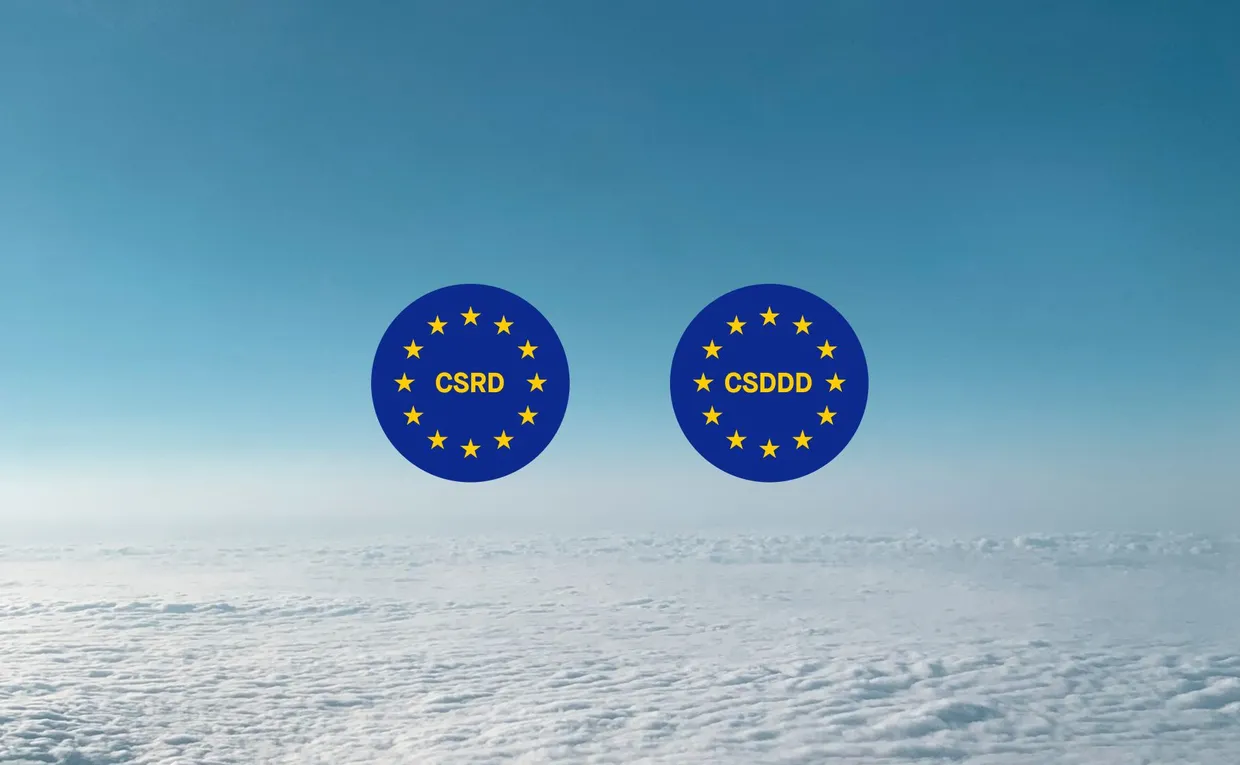We explain what emissions fall under Scope 3, the challenges of measuring them, and how companies can engage their suppliers in collaborative climate action.
According to the World Economic Forum, at present over 50% of the world’s carbon emissions come from only eight supply chains: food, construction, fashion, fast-moving consumer goods, electronics, automotive, professional services, and freight. This shows that if more companies from within these sectors began to reduce their Scope 3 emissions, we’d be in a much better place in our global fight against climate change.
What emissions fall under Scope 3?
The three scopes were established by the Greenhouse Gas Protocol to help governments and business leaders to understand, quantify and manage their emissions – and to enable data to be compared between companies and sectors.
Scope 1 emissions
These are direct emissions from owned or controlled sources. It is divided into four groups: stationary combustion (e.g fuels, heating sources), mobile combustion (company vehicles), fugitive emissions (leaks during production) and process emissions.
Scope 2 emissions
These are indirect carbon emissions from the consumption of purchased electricity, heat, or steam.
Scope 3 emissions
These are indirect greenhouse gas emissions that come from sources not directly controlled by your company, but are still a result of its sold products or services. These emissions can happen at different stages of a product or service lifecycle, such as the extraction and processing of raw materials, transportation and distribution of goods, or their use, and disposal by the end-consumer.
Examples of Scope 3 emissions include emissions from the production of goods and services you purchase, emissions from waste disposal, and from business travel. Understanding and managing these emissions is an important part of every company’s sustainability efforts.
The global Scope 3 reduction target
The Paris Agreement set the ambitious goal of keeping the global temperature rise below 2°C above pre-industrial levels and pursuing efforts to limit it to 1.5°C by 2050. But studies show that to even reach this goal by 2100, global upstream Scope 3 emissions would need to be reduced by 54% compared to the baseline.
We’re currently on track for a warming of between 2.1 and 3.9°C. As outlined in the study, this reduction can be achieved through cuts in energy, transport, and materials (58-67%), manufacturing, services, and buildings (50-52%), and agriculture, forestry, and other land use (39%).
Why is it important for companies to measure and act on their Scope 3 emissions?
According to data from the the Carbon Disclosure Project (CDP), your company’s value chain emissions are 11.4 times greater than those of your own operations. As they form such a significant part of your overall business carbon footprint, it’s essential to incorporate them into your carbon management and reporting, and to use them to drive climate action.
Taking action on your Scope 3 GHG emissions can also bring you a range of business benefits. Here are just a few.
Smarter procurement decisions – Carbon accounting can help you determine which suppliers are committed to taking action on climate change. This enables you to set joint climate goals and to avoid accusations of greenwashing.
Cost reduction opportunities – Effective carbon measurement can help you identify carbon hotspots and introduce plans to improve energy efficiency across your value chain.
Compliance with the latest legislation – New legislation is already coming into force in some countries which makes it compulsory to report on your Scope 3 emissions – and this is likely to become more widespread. If you start taking action now, you’ll increase your regulatory resilience.
What are the challenges of Scope 3 emissions measurement?
Many organisations find that measuring and reporting on the greenhouse gas emissions from across their value chain can be difficult. This is due to its indirect and often complex nature. Here are some of the common challenges:
-
Data collection: As the sources of Scope 3 GHG emissions are numerous and diverse, ranging from the production of purchased goods to employee commuting, it can be difficult to accurately measure and attribute emissions.
-
Data management: Managing and analyzing large amounts of disparate climate data and integrating this with your existing systems can be difficult and time-consuming.
-
Stakeholder engagement: With many conflicting business priorities, it’s often hard to get buy-in both internally and externally for Scope 3 carbon measurement.
How do you start measuring your Scope 3 GHG emissions?
The best method for measuring your company’s Scope 3 emissions depends on some of your key elements such as the supply chain data that you have at your disposal, and the resources available for tracking and measuring emissions. Below, we give you an overview of some key ways to measure scope 3 emissions – which can be particularly useful for category 1 of Scope 3: purchased goods and services.
CDP-based (Using a sectoral emissions factor) – This is a factor which is calculated from data provided by companies to the CDP, which is perceived worldwide as the gold standard in environmental reporting. The factor takes an average of the emissions data submitted by organizations operating in a given sector. It can be used as a starting point for supply chain carbon footprint calculations in the absence of more accurate data.
Spend-based – This is based around the cost of purchased goods or services. The value is multiplied by a given emissions factor to calculate an estimate of your total emissions. Spend-based emission factors are derived from an industry average of emissions levels usually at a national level. This means that they aren’t super accurate. On the plus side, spend-based methodology is relatively simple to implement and can provide a useful approximation of your company’s indirect emissions.
Supplier-based (primary data) – This is the most accurate form of Scope 3 carbon accounting. It involves tracking the emissions from individual suppliers, and then using that data to estimate the emissions associated with your company’s purchased goods and services. Data collection can be a time-consuming and resource-intensive process.
Hybrid – The hybrid method uses a mixture of the above methodologies. It usually presents a fairly accurate picture of your total emissions, but it can be complex and resource-intensive to implement.
Start with a benchmark, then dive deeper into data
While it’s fair to use a CDP-based or spend-based approach for your first benchmark carbon footprint calculation, you need to get more accurate data to reduce emissions in a meaningful way.
The best way to do this is to focus on the strategic suppliers that represent the majority of your emissions. Use the Pareto principle of 80-20: 20% of your suppliers are likely responsible for 80% of your carbon footprint.
Get these suppliers on board by making data collection as simple as you can. Provide them with tools such as customized surveys, a decarbonization simulation tool, and a platform to monitor reduction activity.
The next step: Planning your value chain reduction activity
Once you’ve calculated your Scope 3 baseline carbon footprint, it’s time to set your targets. Then you can begin to reduce your emissions. We would advise starting with two or three key initiatives and engage your suppliers in these. Then check in regularly to track your joint progress.
A data-driven strategy for carbon reduction allows for more precise targeting, increased efficiency, and accountability in building a more sustainable business – so be sure to share your measurement tools with your entire value chain.
Start taking climate action on your Scope 3 emissions with Sweep
Sweep has a two-step approach that can help you cut through the complexity:
-
You start by modeling your supply chain using benchmark data and identifying your emission hotspots.
-
You then dive deeper by sending each partner and supplier a straightforward climate survey. This is the first step to embarking on their own climate journey and tracking the impact of their actions – benefiting both of you.
Get in touch today and let us help you map a pathway to decarbonisation.



